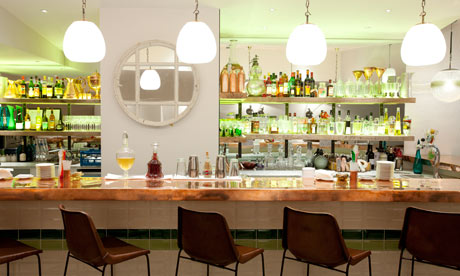
Based on cruel actuarial calculation, a tontine is an investment that pays an increasing annuity as other participants die off. In 1804, this morbid mechanism was used to raise funds for the Cleveland Tontine, a coaching inn built to serve the Sunderland-London route, which is now the rackety A19. In 1976, the Tontine was acquired by the three McCoy brothers, Eugene, Tom and Peter, who became leading lights of northern gastronomy. When I last visited the Tontine 20 years ago, a meal in the upstairs restaurant was a curious experience in rural North Yorkshire. Packed with parasols, it was like a stage set from Les Parapluies de Cherbourg and the extravagant dishes were equally theatrical.
After four decades of expansion and contraction, the McCoy empire has stabilised in the form of a hotel with basement bistro. Cooked by head chef Simon Whalley, the food is mercifully more down-to-earth (the fish comes from Hartlepool; the meat from Darlington). The operation still displays some odd quirks, not least on the website which reveals that the McCoys "love ... 1950s Middlesbrough bus place name blinds", but fails to give opening hours. When my wife and I visited the bistro for a midweek lunch, inadequate signage (due to be improved) involved us in a north-south-north zigzag on the A19.
Going downstairs in the solid 19th-century structure, we found ourselves transported to a persuasive rendition of a Parisian bistro. Candles glowed on every table. Vines in plaster relief curled on a low, brown ceiling. Charles Trenet warbled "Quand notre coeur fait boum!" from 1938. Framed menus from La Coupole, Allard, Benoit and other great brasseries revealed that one of the McCoys had engaged in some hefty wining and dining in Paris around 1968, rather than participating in the événements.
Read more at http://www.independent.co.uk/



































